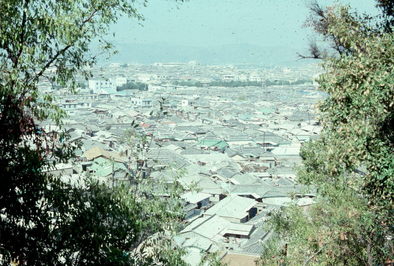 =0=
=0=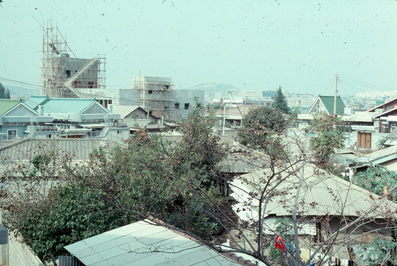 =0=
=0=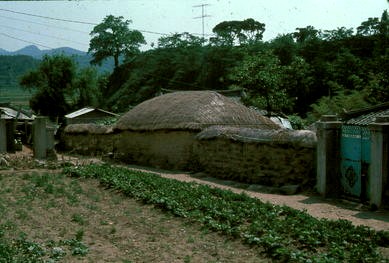 =0=
=0=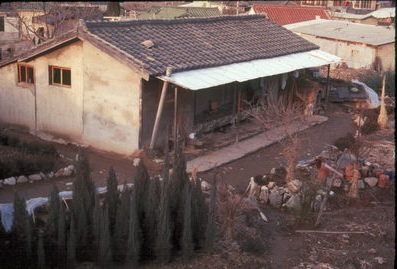 =0=
=0=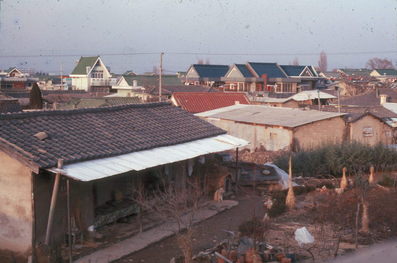 =0=
=0= =0=
=0=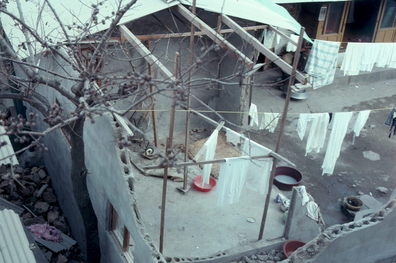 =0=
=0=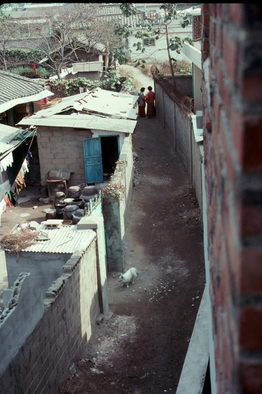 =0=
=0=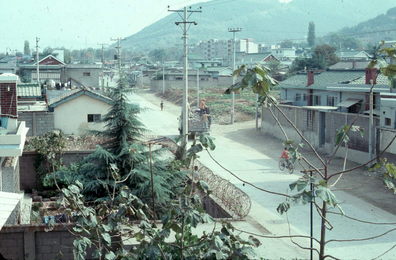 =0=
=0=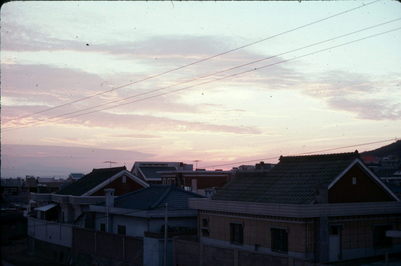 =0=
=0=| This is a overview of the city of Daegu. It looks like a sea of tile roofs and as you can see they don't waste any space with such things as lawns, though the traditional house would be built around a central garden (the house surrounds the lawn instead of the U.S. tradition of the lawn surrounding the house). |  =0=
=0= |
| This is a closer view of the sea of tiles. The building in the distance under construction is an example of how Daegu was under constant change. When we arrived that building was just starting, but a few weeks later there has been much progress. On my walk to work each day there might be an empty lot, but then a few weeks later there would be a new house built there. |  =0=
=0= |
| Within the city of Daegu you would get all sorts of houses, often built right next to each other. This is an example of a traditional Korean farm house. It is made of rock with mud around it to fill the gaps. Then the roof is rice straw, the part of the rice plant after the rice is removed (very little nutritional value, which is what straw is). The thatch roof would be about two feet thick, but apparently keeps the rain out. They also protect the mud of the wall with thatch over the top of the wall. This house would have what looks to be about three rooms with an adjoining porch so that to get from one room to the other you got out on the porch (and into the weather, but not worry, the rooms are never very warm anyway so that is not such a problem as you might think). |  =0=
=0= |
| This is a more modern Korean farm house. The walls would be cinder block )but very low quality with much more sand than you would see in the U.S.) and then cement plaster over the cinder blocks (to protect them from the weather and such because of their high sand content). Also, in the U.S. cinder blocks made under pressure, but in Korea they are just molded and sun dried (more on that later). The roof would be tile if it was upscale or just corrugated steel (downscale). This has both. |  =0=
=0= |
| This would be the same house but with a slightly different view so that you can see that it is right in the center of the city with some very upscale houses within a stone's throw of the old farm house (if you had a really good thrwoing arm). Clearly the Koreans were not very much into the idea of zoning or the real estate princilple of location, location, location. |  =0=
=0= |
| This is another old farmhouse and a little down scale in that it has a corrugated roof. Also, in this house the cinder blocks are exposed to the weather and, with the lower quality of cinder blocks, after a few years you will see holes in the cinder blocks where the weather has worn away the cinder block. While by American standards everything seems quite cluttered, once you have been in Korea for a few months it looks quite ordinary. Cluttered looks natural and American norms look artificial and unpopulated. It is all dependent on what you are used to. If you look to the right and close to the top this picture you can see some big brown glazed pottery jars. These are for kimchi, the most basic Korean staple. It is made from cabbage, vinegar, and lots of red pepper. It basically pickles the cabbage and when we were there Koreans would have that as there main course at every meal. It was their main source of vegetables and vitamins (rice being the source of calories). In the fall they would bury many of these kimchi pots and dig them up as needed through the winter. |  =0=
=0= |
| This is the view from the back window of the first house we stayed in. I never figured out why that room was only partially finished and partially knocked/fell down. However, you can see how the cinderblocks they used in such houses did not hold up to the weather very well. Such houses are not very pleasant as the thin walls don't insulate very well to keep the heat in in the winter and aren't think enough to retain the coolness during the days in the summer. Also, while in Korea they will often use the same words we use in English for new things, they sometimes have completely different meanings. The corrugated roofs they have are called slate roofs, but in the U.S. such roofs would be stone slabs. However, here they are are similar in composition to what we would call asbestos tiles, but are much larger and corrugated. They also likely don't have asbestos as the fibrous material which characterizes asbestos tiles, but might have the same cement composisiton as such tiles. |  =0=
=0= |
| This picture is another view from the back of the house we first stayed in (and to the right of the picture above). Korean neighborhoods will have blocks about the same size as blocks in the U.S., but instead of having two rows of houses long each block, there will be houses built right next to each other and facing all four sides of the road. Also, the road is pretty narrow, just wide enough for two cars (and smallish cars at that) and unpaved. There roads seem to have been made with rocks just thrown down, but which get beaten into the dirt so that when it rains you don't get stuck in the mud, but everything is covered with 1/4 to 1/2 inch of slimy mud (lots of clay). Within the block there are little alley ways like this one and smaller downscale houses which completely fill the interior of the block. You might also notice that the little dog in front of the house is white. Well practically all dogs in Korea are white. We at first thought that that was very cute and decided that Koreans must really like the color white, but then learned that in Korea white is the color of death. Traditionally if it was a really hard winter, the Koreans would eat their dogs and white dogs were the least apetitizing as they were the color of death. So over time, all Korean dogs were white, evolution in action. To the left middle of this picture is a collection of kimchi pots which is a common sight with all Korean houses. To the left side there is a little slate roof about the size of a closet which would be the family bathroom, just a little hole in the ground. Not a true outhouse as every so often 'honeypot' men would come by to pick up the contents, which, presumably, would be taken out to the fields. You can also see that they have their laundry out hanging to dry. They wash clothes most every day by hand either by beating it between two rocks or rubbing it against a wooden scrub board (their idea of a modern convenience. Korean houses tend to be rooms around a cetral enclosure with high walls all around. The house to the left has broken glass imbedded in the cement along the top with sharp metal rods along the top of the gate. The wall to the right in the distance has concertiina wire (barbed wire in a spiral). Those were the three standard deterents to theft. |  =0=
=0= |
| This is the view from our first house in the same general diretion as the last. Our second house was a couple of blocks in that direction and up the hill about a half block. The entrance to Camp Walker that I used was about a half mile straight to the left. This road is paved, which makes it a major thoroughfare or arterial. I heard that this road was once an open sewer, but they paved it over and it became a thorughfare. What an improvement. You can also see the neighbors barbed wire on the top of their wall. The other thing interesting about this slide is the trash truck which is behind the telephone pole. They do trash a lot different from the way we do in the U.S. in that instead of the men going out to collect the trash (which would be hard with all the little alleyways, the women of the house bring the trash to the truck. |  =0=
=0= |
| Now, of course they need a way to let people know they are there and that threw us for a loop. When we first arrived we would hear what sounded like ice cream truck chimes playing a most pleasant tune (Barbara hummed a little section you can listen to, 15 seconds or so) at all hours of the day, often at 4 or 5 in the morning. We wondered who would want ice cream at that hour but soon learn it was the trash truck call for the women to bring their trash (what a bother for the women). The truck is basically an open flat bed truck with wooden walls on the two sides (and a metal wall at the front) and open in the back. The men would throw the refuse to the front and build a sort of wall with the burnt out yuntun along the back. Now you wonder, what, prey tell, is yuntun. Well that is the perfect lead in to the next slide. This is a sunset from our first house. |  =0=
=0= |
This page was last updated on August 28, 2005.